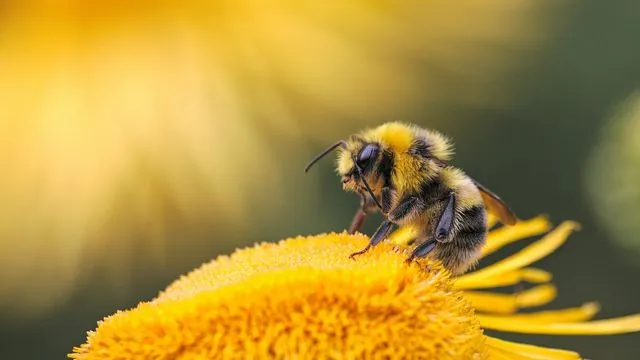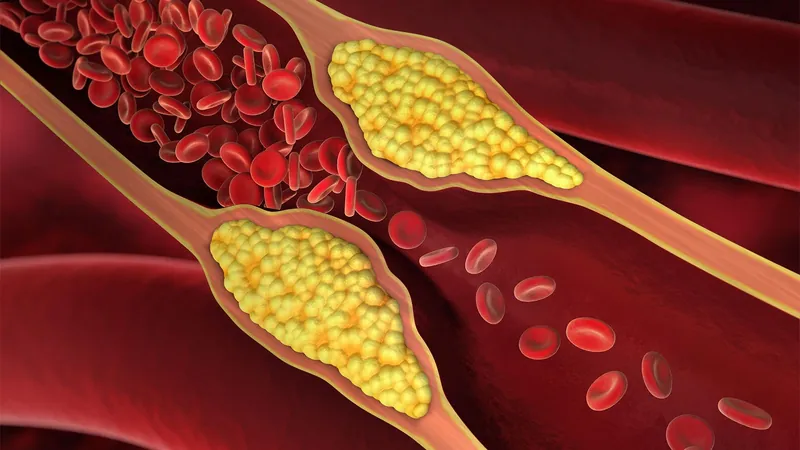
Unlocking the Secrets of Bee Survival: How Nutrition Fights Off Pesticides and Viruses!
2024-09-27
Introduction
In a groundbreaking study from the University of Illinois Urbana-Champaign, researchers have uncovered the critical role that quality nutrition plays in helping honey bees combat the dual threats of pesticides and viral infections. This multifaceted research sheds light on the complex interactions between these stressors and their impact on honey bee survival — a topic that has become increasingly urgent as bee populations face decline worldwide.
Research Goals and Insights
"We aimed to understand how nutritional stress, viral infections, and pesticide exposure together influence honey bee survival," said Edward Hsieh, the lead graduate researcher. Their insights, featured in the journal Science of the Total Environment, present a compelling case for the importance of nutrition in bee health.
Unique Holistic Approach
While previous studies have often focused on one or two factors—like the negative effects of poor nutrition or pesticide exposure—this study is unique in its holistic approach, examining all three stressors simultaneously. "Multiple stressors are generally harmful to survival," Hsieh noted, emphasizing that bees’ responses can vary widely depending on context.
Complexity of Agricultural Chemicals
The complexity of this research stems from the nuanced effects of various agricultural chemicals. Certain insecticides may be especially lethal to specific insects, while fungicides can sometimes amplify the toxicity of insecticides. "Understanding how bees interact with these chemicals is no small task," explained entomology professor Adam Dolezal.
Research Methodology
In this study, Hsieh and the team investigated pollen collected from honey bees visiting restored prairie patches near agricultural fields in Iowa. They simulated exposure to commonly found pesticides, such as chlorpyrifos, lambda-cyhalothrin, and thiamethoxam, alongside infections from the Israeli Acute Paralysis Virus, a known contributor to colony collapse disorder.
Key Findings
The results revealed a stark contrast in bee mortality based on diet. Bees fed artificial pollen displayed alarmingly high mortality rates when exposed to the virus and pesticides simultaneously. However, those on a diet of natural pollen demonstrated remarkable resilience; while they still faced challenges, fewer bees succumbed when exposed to pesticides alongside the virus.
Low-Level Pesticide Exposure Benefits
One interesting finding was that low-level pesticide exposure might actually bolster bees' ability to tackle more significant stressors, provided their nutritional needs are met. "Bees possess an inherent ability to cope with stress," Dolezal remarked. "But this resilience hinges on having adequate nutritional resources."
Cautions and Future Implications
Despite the encouraging implications of these findings, the researchers caution against downplaying the dangers posed by pesticides. "Different chemicals can exert varying effects, and exposure to even small amounts of pesticides can be detrimental," Dolezal stressed.
Conclusions and Hopeful Outlook
In light of the study, the researchers are hopeful that enhancing high-quality prairie habitats near agricultural areas can benefit bee populations, as these environments appear to support greater resilience against harmful stressors. "This study shows that while pesticides and viruses are serious threats to bees, nutritious environments can provide a buffer," Hsieh concluded.
Final Thoughts
As the buzzing guardians of our ecosystem continue to face unprecedented challenges, this research shines a light on the critical importance of nutrition in their survival toolkit. It’s a reminder of the power of nature’s interconnectedness and the vital role we all play in protecting these essential pollinators.



 Brasil (PT)
Brasil (PT)
 Canada (EN)
Canada (EN)
 Chile (ES)
Chile (ES)
 España (ES)
España (ES)
 France (FR)
France (FR)
 Hong Kong (EN)
Hong Kong (EN)
 Italia (IT)
Italia (IT)
 日本 (JA)
日本 (JA)
 Magyarország (HU)
Magyarország (HU)
 Norge (NO)
Norge (NO)
 Polska (PL)
Polska (PL)
 Schweiz (DE)
Schweiz (DE)
 Singapore (EN)
Singapore (EN)
 Sverige (SV)
Sverige (SV)
 Suomi (FI)
Suomi (FI)
 Türkiye (TR)
Türkiye (TR)